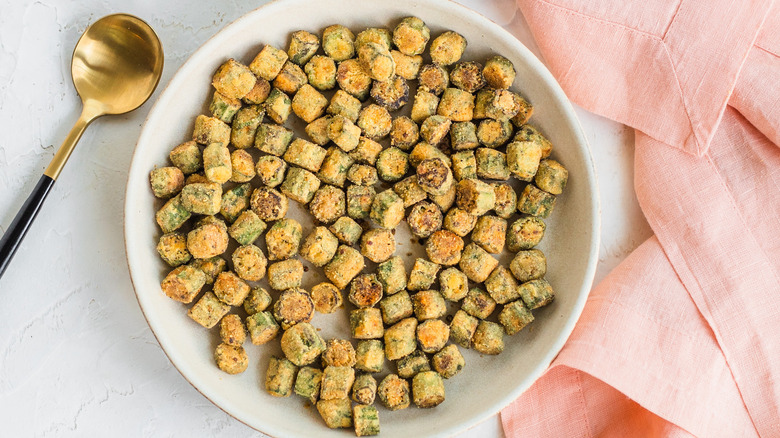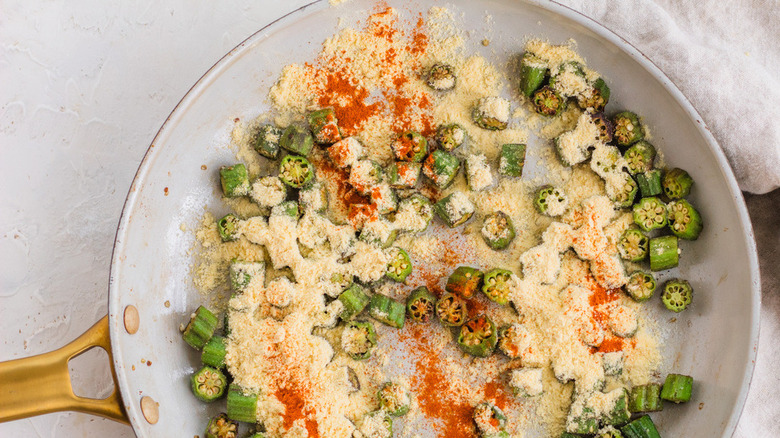Pan-Fried Okra Lets You Enjoy The Vegetable Without The Slimy Texture
Trying to get more greens into your diet but have had your fill of kale, broccoli, and green beans? It's time to give okra another try, even if you're not the biggest fan of its slimy texture. We concede that the gooey characteristic of this green veggie is somewhat of an acquired taste and isn't a guaranteed palate-pleaser for all. However, we have a tip to minimize that gooey center and make it more enjoyable to eat: Slice it into rounds and fry it with a scrumptiously crisp coating of seasoned cornmeal.
So, how does this speedy, pan-frying technique reduce the gluey quality of okra? Here's a little culinary science — okra's slimy middle, which is technically called mucilage, is a combination of sugar and protein residues. When okra is heated, the viscosity of the mucilage (also found in kelp and aloe vera) increases, making its existing slimy consistency even gooier. This slimy center is the perfect thickening agent for stews, like gumbo, because it adds body and heaps of flavor to the pot as it cooks. However, frying the okra at speed, instead of giving it a long slow simmer, reduces the viscosity of the mucilage, and coating it with cornmeal lends heaps of textural interest to each bite-sized piece.
What does the cornmeal do to the okra?
Coarsely textured cornmeal is the magic ingredient that creates a crispy, golden crust on the surface of pan-fried okra and counteracts its sliminess. Simply slice your okra into rounds and part cook it in a frying pan before adding in your seasonings and the cornmeal. The cornmeal does two vital jobs. First of all, it coats the discs and crisps them up, transforming their exterior from a yielding vibrant green to a crunchy golden yellow. Secondly, it absorbs some of the viscose slime in the okra that resides with the seeds in the middle, resulting in a drier, crispier finish. Preparing okra in this way creates a soft interior with minimal goo, which pairs perfectly with the crunchy breading on the outside that also boasts a slight kick, courtesy of the addition of a generous pinch of cayenne pepper.
Slicing okra into thin strips before lightly frying them is another easy way to reduce their slimy texture. The increased surface area of the skinny lengths crisps up in the oil, creating a yummy, appetizing crunch. Did you know it's also safe to eat raw okra when its slimy texture is at its lowest degree? Toss it into salads or dip it into some hummus to make a filling plant-based snack.

